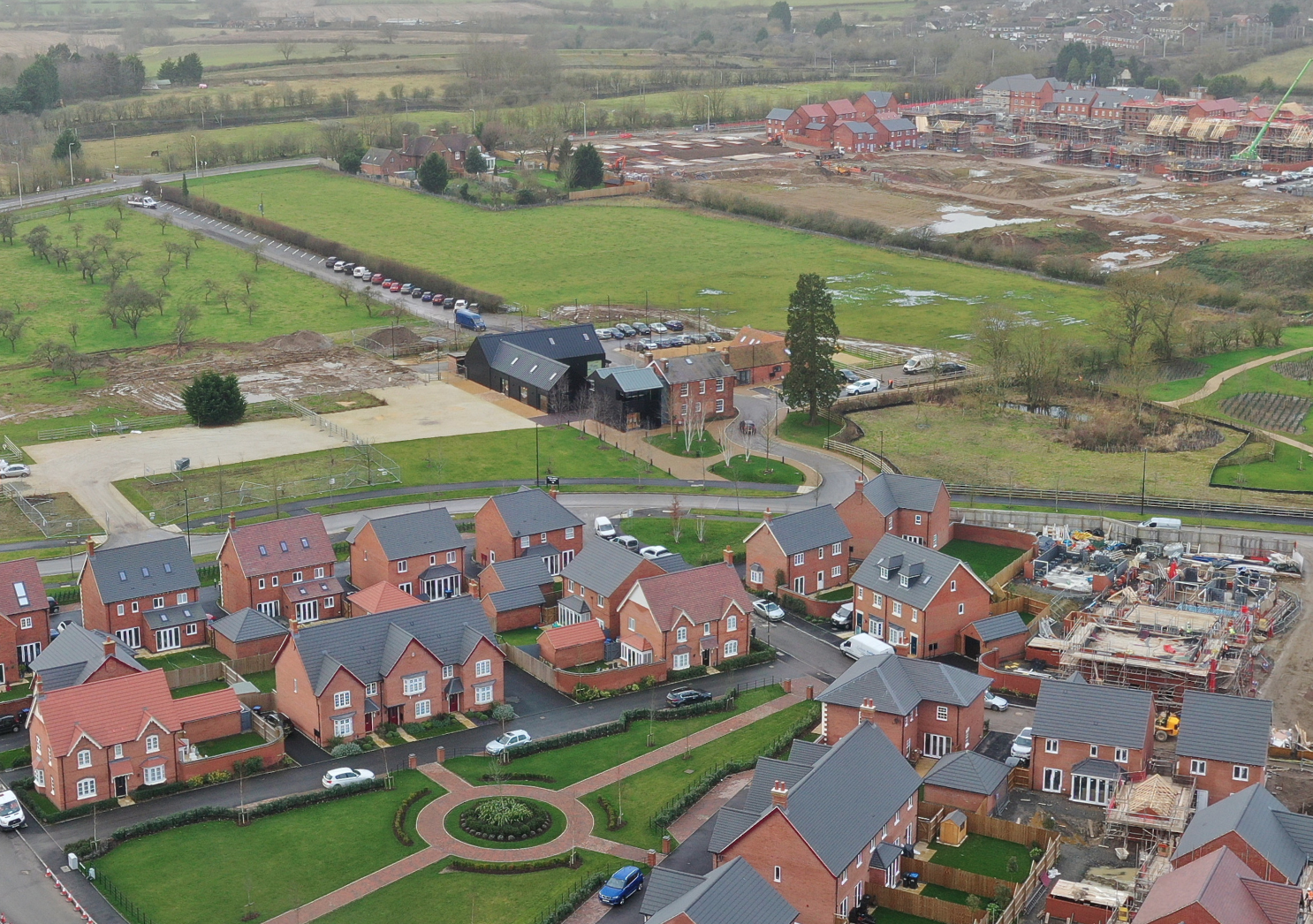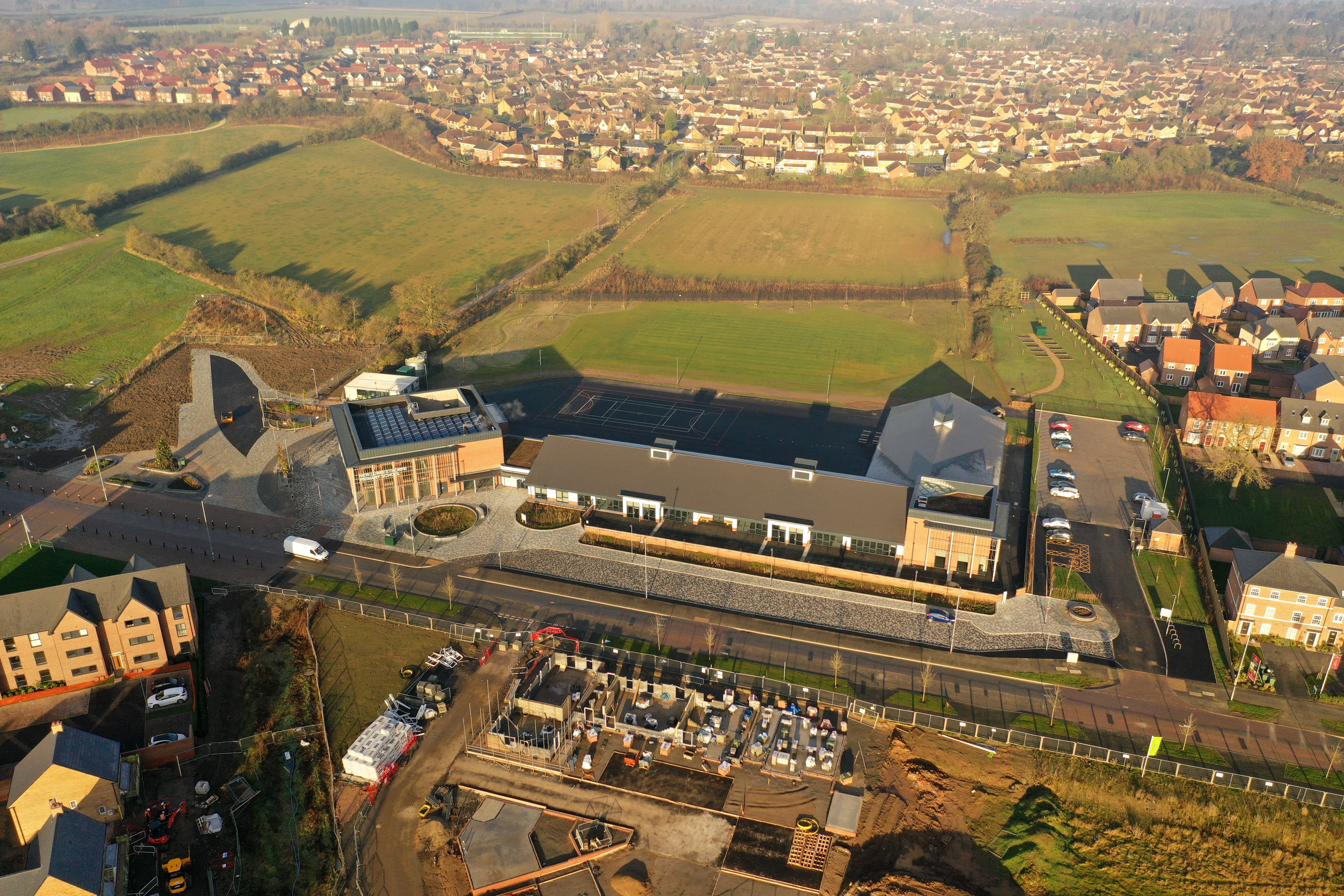Over the past 5 years I have had increasing involvement with Strategic Development Sites primarily through drone work I undertake for clients. This work is wide ranging from filming greenfield sites which are at the start of the planning journey through to undertaking photogrammetric surveys (mainly for volumetrics) to regular construction updates. I am therefore fortunate to see and experience on a regular basis sites at various stages of development.
The first thing you do need to bear in mind is the timescale. Prior to the first spade been put in the ground the developers and promoters would have spent many years going through the planning process. The overall scheme will have followed national planning policy and most likely would have been promoted through the relevant Local Plan. During this lengthly and complex planning process all manner of aspects of the development would have been considered. This will result in a Master Plan which sets out the general prinicples of the scheme. The Master Plan will set out the general layout, roads network, housing mix, the amount and location of affordable housing, schools, health care facilities, local centres and shops, open spaces, landscaping and much more.
We are therefore at a point in time where possibly 5 maybe 10 years have passed securing the planning permision which has been "designed" by a team of professionals following policy to be built out over the next 10+ years.
Initial work will most likely focus on providing the initial infrastructure including roads, water supplies, foul drainage and power to serve the development. In addition high speed interent is essential. In parallel with this first phases of the housing land will be sold to house builders and it is common to see a number of the major house builders on the same site. After about 12 to 18 months of starting the development the first new buyers will have reserved or even purchased their new home. I often think that these people are the pioneers. They have taken the plunge to purchase a new home on a large scale construction site where there are, in these early days few local facilities.
Why are there few facilities? This is often down to economics and commercial factors. The land owners in many cases are having to fund the primary infrastructure for the site to get the development started. Building roads, bridges, roundabouts, and providing surface and foul drainage and power are normally big ticket items. Many millions can be spent before the first house is coming out of the ground. In addition whilst you may see schools and a health centre being built within the first few years these won't be provided before the first house is occupied. Same would apply to shops. It would be difficult to persuade a shop owner to take on a new premises in the middle of a construction site where there are few customers.
The one thing that I have seen is either a local "Call In" centre or a cafe being provided. At New Lubbesthorpe a Local Centre was provided in the earlier stages of the scheme and used as a meeting point for the new residents. It was well used, in particular by families with young children. It gives residents a place to meet and the opportunity to learn about the development progress.
At Urban & CIvic's Scheme at Houlton (Rugby Radio Mast Site) they have the excellent cafe, the 'Tuning Fork' which sits alongside their offices and a Vistor Centre. Urban & Civic also publish a regular newsletter, the Houlton Signal. The Houlton development commenced in 2014 and the Tuning Fork opened in Spring 2017. The Tuning Fork and offices are shown in the centre of the picture.

Schools are another important element of Strategic Development Sites and again help communities build. Kids do have a habit of bringing people together and from that frienships will build between them and the parents. The picture shown right is the New Lubbesthorpe Primary School opened in Autumn 2019. I don't believe the school is anyway near capacity but that will build as new families buy homes on the site.
To the left of the School a local centre will be provided which will include a Heath Centre, shops and other facilities. This phase of the development will commence shortly.

With most of these large developments there is either an element land of other employment centres in the locality. Employment land is often built out in later phases of the development. The ideal scenario would be to have employment opportunities close to where you live, maybe even within walking of cycling distance. The ability to get to and from work via a network of well maintained paths and open space has to be better than a commute in heavy traffic whether by car or on public transport.
If you search on line you will find a lot of links to development and building communities. Much of it is policy related or case studies from schemes both in the UK and abroad. The foundations for these new developments will be in policy and good design. As a chartered surveyor amongst the many other professionals including planners, architects, landscape asrchitects, engineers and others your aim is to create something where people will want to live and where communities flourish not in 4 or 5 years time but in 20 to 30 years time. That to me will be the real test. I wonder if Sir Ebenzer Howard who masterminded Welwyn Garden City would be happy with his creation?
We therefore have to take a longer term view and hope that today's thinking in urban design will translate into where people will want to live long term. For these new developments it will be interesting to see the churn or turn over of owenership. Most important of all are the home owners and residents and the demographic mix. As a generality I would expect the residents to be biased towards younger families as opposed to retired of older people. Will they want to stay, that will be the test.
Final point - why don't any of these strategic sites include pubs?